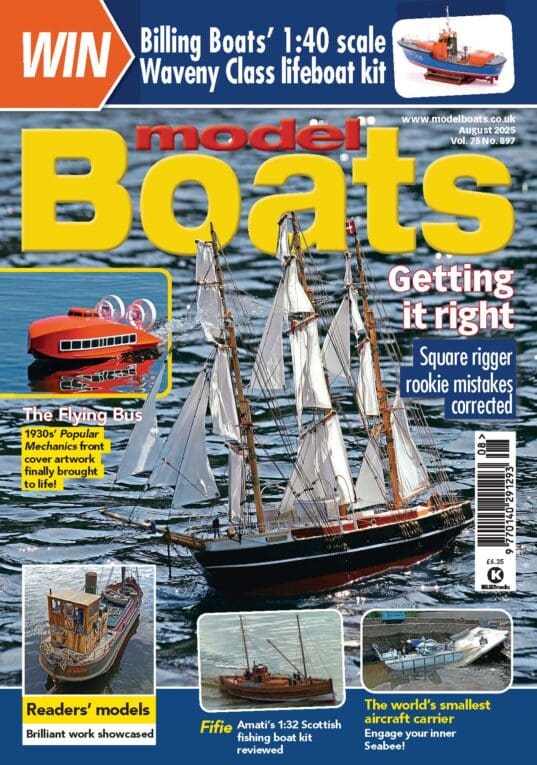Dave,
Tim is quite correct in his description of a self tacking vane, The vane does not initiate the tacking manoeuver, that has to be done by the skipper or his mate on the opposite bank poling the bow of the yacht across until the jib sail fills and the vane then automatically flips over to the position appropriate for sailing on the opposite tack. The advantage that the self tacking vane gives is that the yacht does not need to be stopped to make a manual adjustment to the vane's position.
When the vane is broken it is held over on one or other side of its travel, partly by its weight assisted by the heeling of the boat, partly by the aerodynamic forces on the feather from the wind and also by a light overcentre spring. The spring prevents the vane from flipping over on to the opposite tack in the event of a gusty wind or choppy water. However the vane gear has to be set up carefully to ensure that when the boat is poled on to the opposite tack, the spring is not too tight and prevents the vane flipping over to the opposite side.
Its not unknown for boats to change tack inadvertantly and this phenomenon is exploited in guying when an overcentre spring is set up 'off centre' so the vane is held more positively at one side of its travel than the other. The boat is released on the tack where the vane is only lightly held in position. In the event of a change of wind speed or direction the vane flips over on to the opposite side and turns the boat. Because the vane is more positively held in this new position the boat should stay on this new heading. Its a useful tactic when you are near the finish line and don't want the yacht to go all the way over to the other side of the pond. However there is an element of chance in what will happen and setting just the right spring tension and offset requires great skill and experience.
I think every vane sailor is still learning, no matter how long they have been doing it. Its a big help in understanding vane sailing if you can find somewhere its practiced and watch and ask questions. Its a very sociable form of model yacht racing, much less aggressive than radio sailing. Unfortunately there are not that many sites where it is now possible as all round access to the pond or lake is required. The main centres nowadays are probably Fleetwood, Birkenhead, Bournville, Gosport, Hampton Court and possibly the Round Pond and Clapham in London – if I have missed anywhere out I apologize.
Gareth


 an on board computer with position and direction sensing and enough power should make it happen. Doing it with a yacht that has to cope with varying wind conditions without getting into an unrecoverable situation is less easy. On "my" lake, due to varying wind strength and direction caused by the nearby trees, I have watched one of mine sail a straight course and tack 3 times in about 10 yards without changing direction. Entertaining, but it illustrated the point that that corner of the lake is not a good spot to learn to sail a windy boat.
an on board computer with position and direction sensing and enough power should make it happen. Doing it with a yacht that has to cope with varying wind conditions without getting into an unrecoverable situation is less easy. On "my" lake, due to varying wind strength and direction caused by the nearby trees, I have watched one of mine sail a straight course and tack 3 times in about 10 yards without changing direction. Entertaining, but it illustrated the point that that corner of the lake is not a good spot to learn to sail a windy boat.



